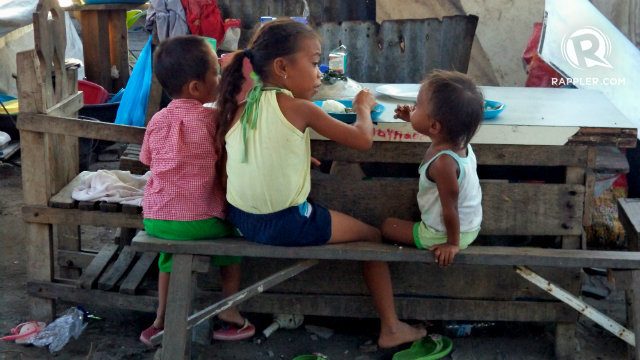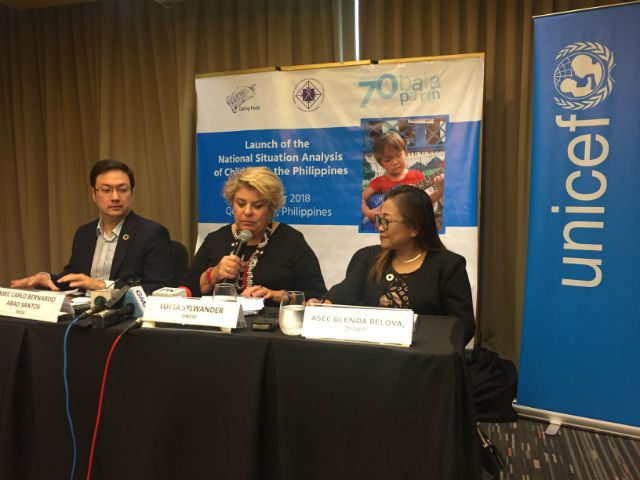SUMMARY
This is AI generated summarization, which may have errors. For context, always refer to the full article.

MANILA, Philippines – Rising prices of food due to the rapid inflation may further aggravate the poor nutrition of children in the Philippines, the United Nations Children’s Fund (UNICEF) warned on Tuesday, October 9.
According to UNICEF representative to the Philippines Lotta Sylwander the increasing prices of food items, coupled with misconceptions of what children should be fed, could further impact the “very high” levels of children who were stunted and underweight.
Findings from UNICEF’s Situation Analysis of Children in the Philippines showed that for children under 5 years old, 1 in 3 were stunted while 1 in 5 were underweight. Sylwander said the “very high” levels of child malnutrition were similar to those seen in many African countries, which were “substantially poorer.” (WATCH: The realities of malnutrition among children)
“Family income of course matters for nutrition, theres no doubt about that,” she said in a press briefing held at the sidelines of the launch on the report.
National Economic Development Authority (NEDA) Assistant Secretary Carlos Abad Santos he noted that rising food prices were “worrisome particularly because there is a differential impact on the poor people.”
“Poor people would have a big chunk of their income for food and if food prices go up then they would either spend more or the same money they’re spending but less food. That would impact in terms of the nutrition and health of the family that’s why I think whats very important is that we need to address the prices of food,” he said.
Because of this, Abad Santos said it was important food prices were lowered and agricultural policies were addressed to increase the productivity of farmers. Improving access to food and logistics were also crucial, he said, as these contributed to the high prices of food.
The Philippines has seen consecutive quarters of high inflation, with no signs of slowing down as latest figures climbed to 6.7% in September 2018. (READ: [ANALYSIS] Why is Philippine inflation now the highest in ASEAN?)

Misconceptions of nutrition: But apart from being able to afford food to keep children healthy, Sylwander said knowledge of what exactly to feed children was equally important.
“It’s sad that the inflation now is so rapid that it can actually directly or indirectly harm children’s health but we believe there’s more to it than just the poverty issues…. I think the increasing prices on food items will have an impact on the nutritional status of children and I think we also need to recognize (there is) a lack of understanding and misconceptions of what children should be fed and when,” she said.
Sylwander narrated some challenges Filipino families had around what children should be fed, such as the common practice of feeding rice water to children as part of weening them of breastfeeding. “That contains absolutely nothing in terms of nutrients,” she said.
Sylwander also noted the lack of a balanced diet for children in both rural and urban areas.
“A very singular food that the child is given may be only rice which is not for a child. A child needs proteins and carbohydrates, and fat, to continue to grow,” she said.
She added, “Not too long ago, we were already seeing these numbers gradually shrink. But now, the trend is being reversed – with cases of undernourishment, stunting, and childhood wasting actually increasing, instead of being reduced.” (INFOGRAPHIC: How malnutrition affects a child) – Rappler.com
Add a comment
How does this make you feel?
There are no comments yet. Add your comment to start the conversation.